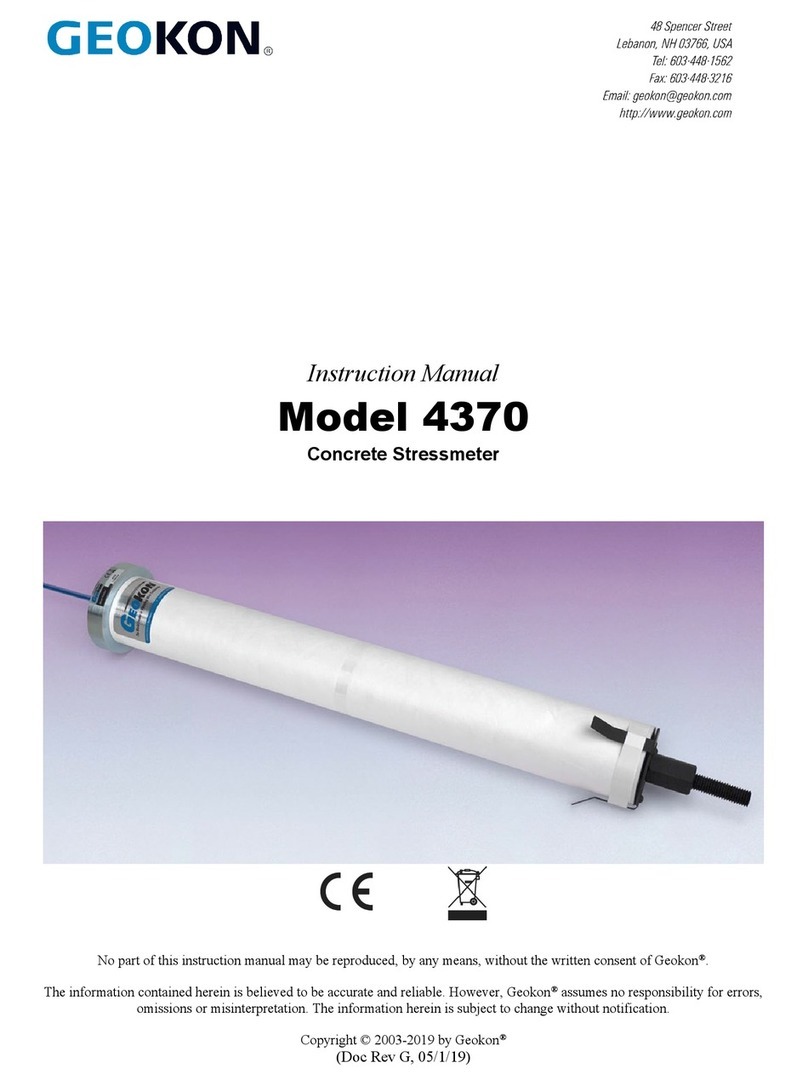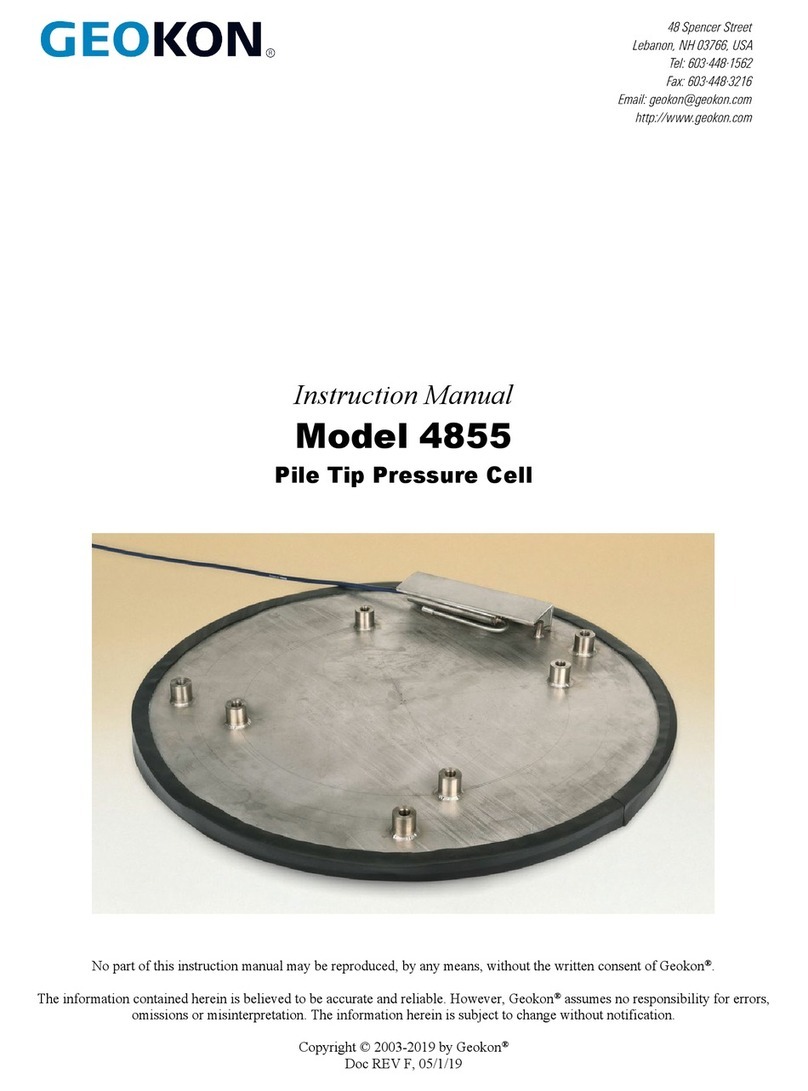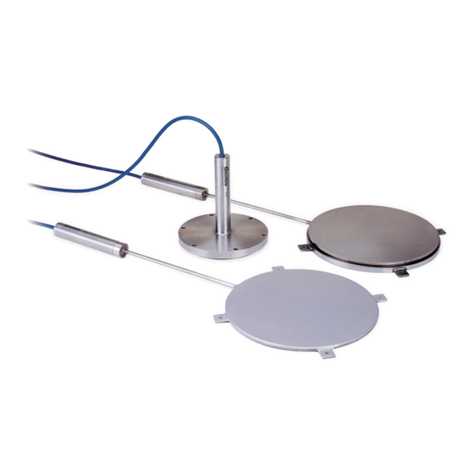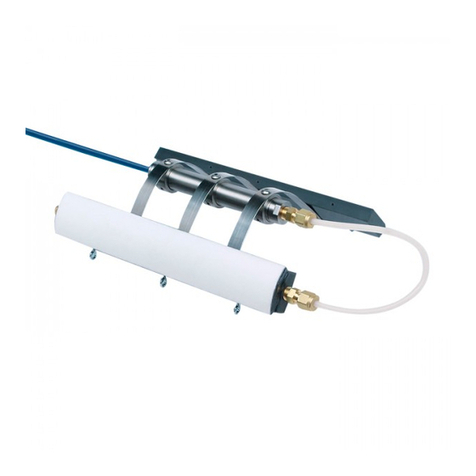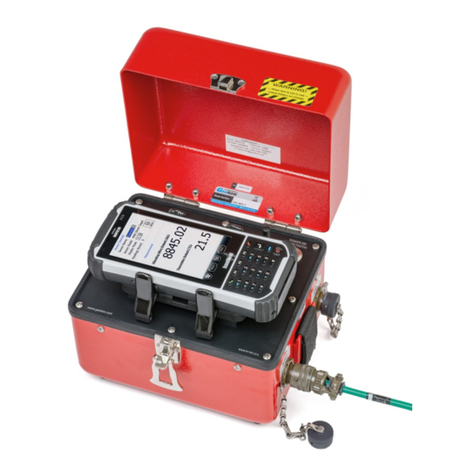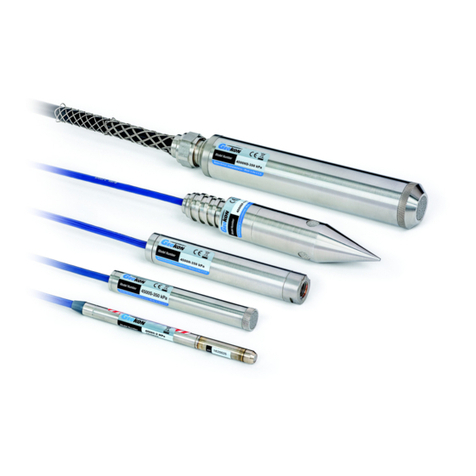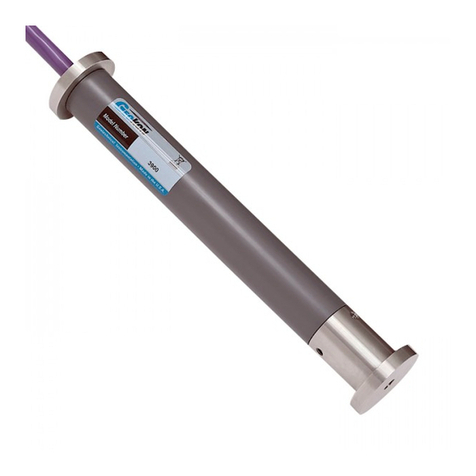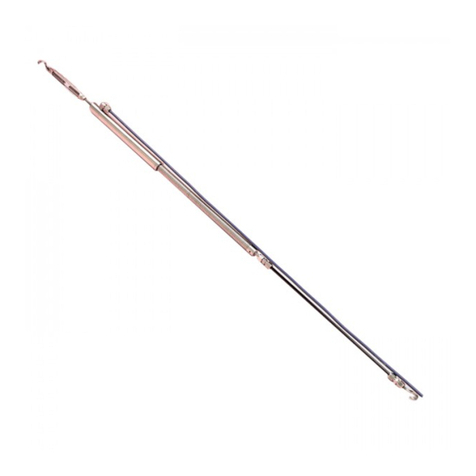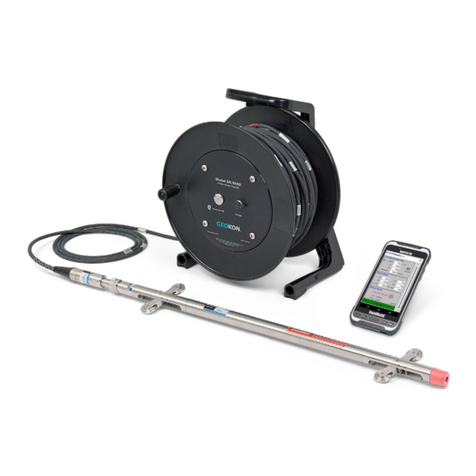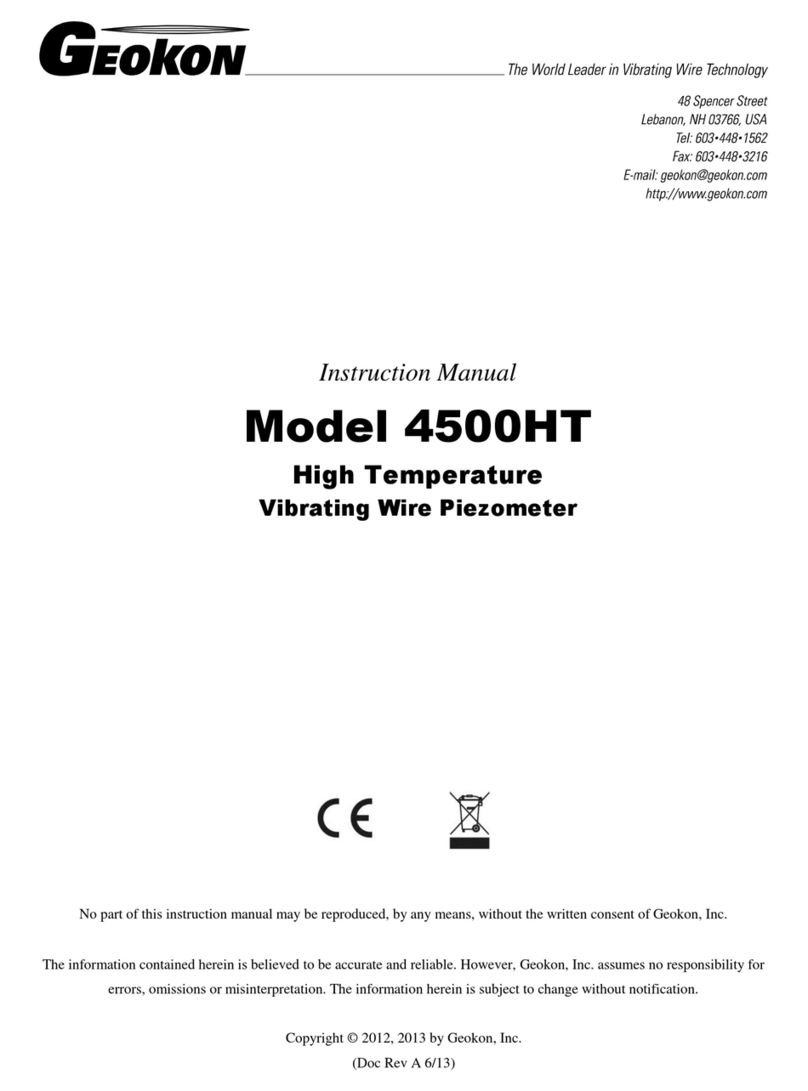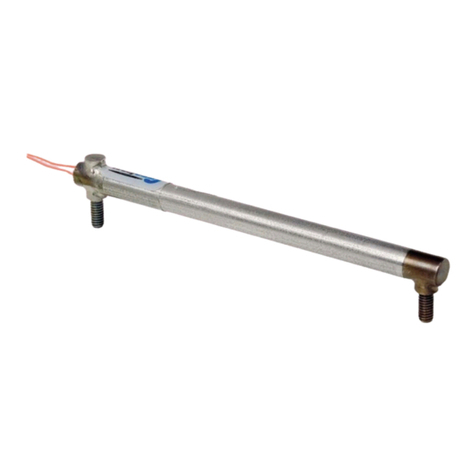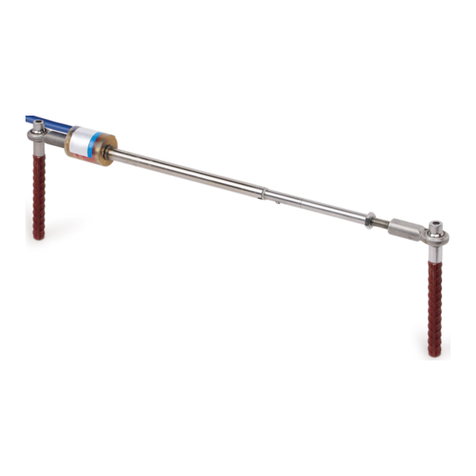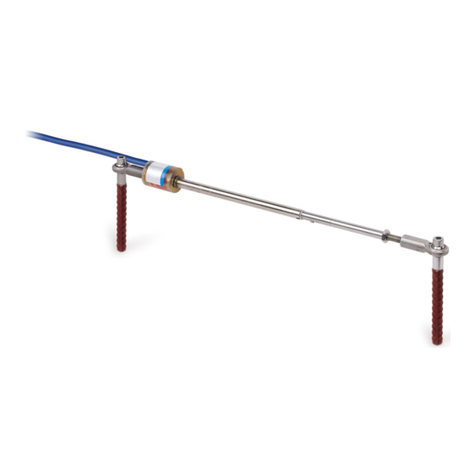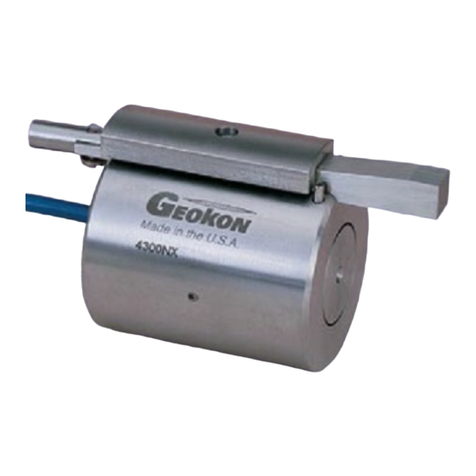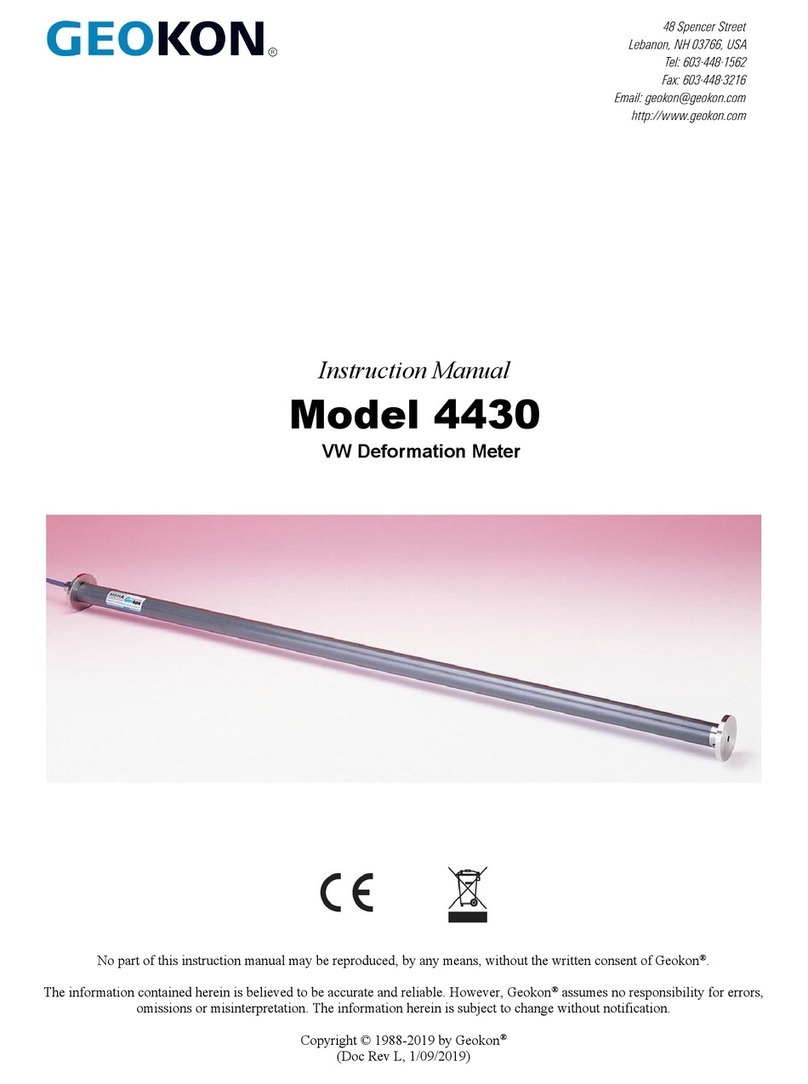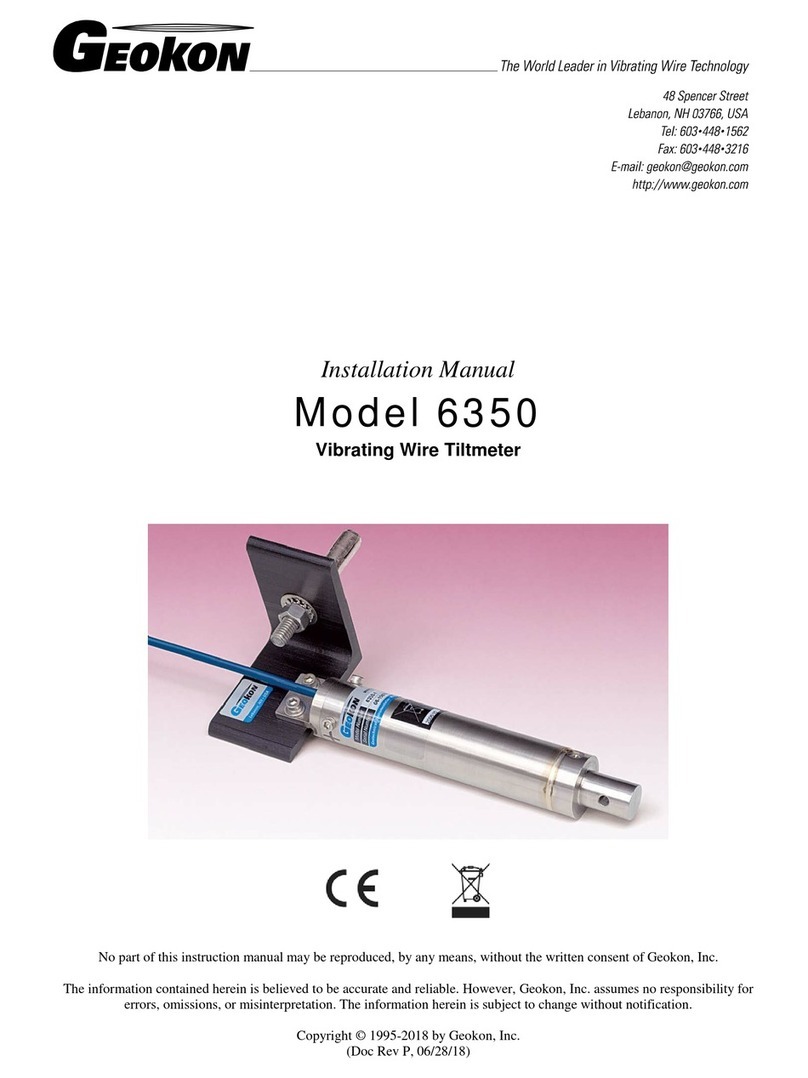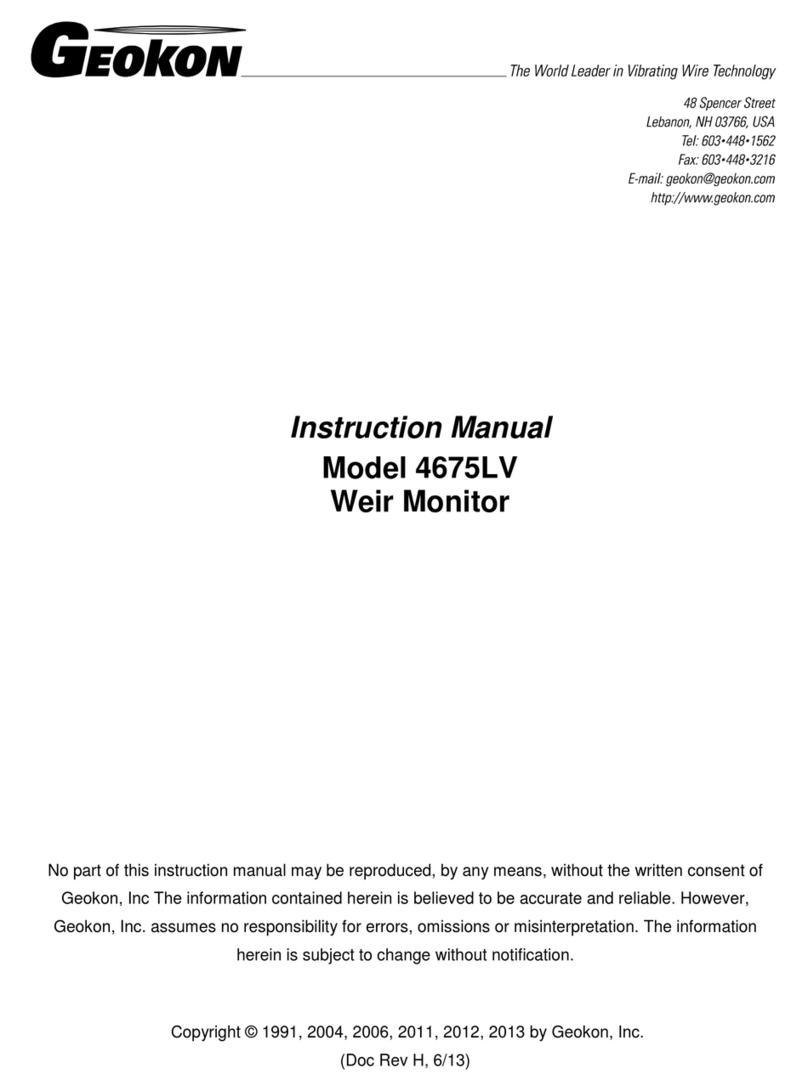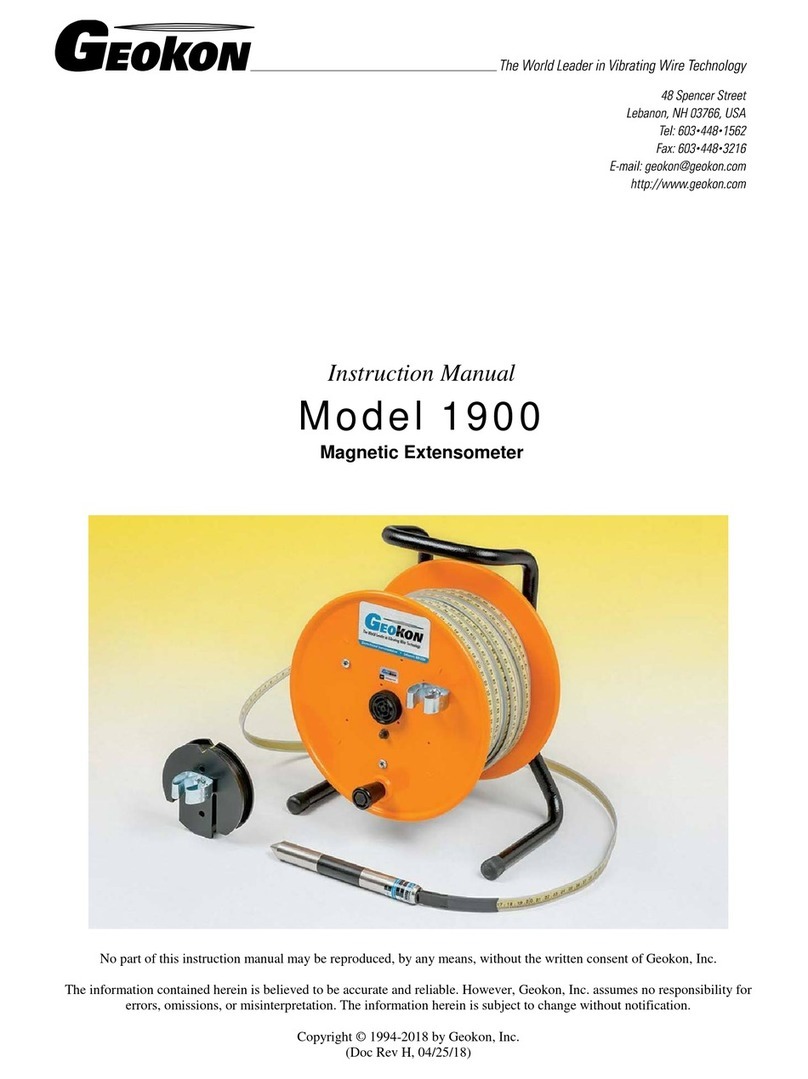
4
5. The assembly is now ready for installation in the borehole. Lower into the borehole with
the bottom anchor first. Bend the connecting rod through a large arc, as needed to lower the
extensometer. Be careful not to permanently bend the rods.
6. Once the assembly is installed attach the inflation lines to the pressure manifold. Attach the
transducer cables to the terminal box or multiplexer.
7. Make sure all the valves of the pressure manifold are in the off position. Attach the air
supply to the pressure manifold. Carbon dioxide, compressed air or nitrogen may be used for
the pressure supply. The recommended pressure for setting the extensometer is 300 psi (20
bar). Appendix C illustrates the relationship between applied pressure and pull-out of the
anchor. The maximum recommended applied pressure is 750 psi (50 bar).
8. Turn on the air for the deepest position of the extensometer. Attach the readout to the
instrument cable from the first transducer position. To set the transducer anchor pull on the
extension rod coming out of the borehole until the desired reading is obtained and then turn
on the valve for that position. To set the instrument at mid-range the reading should be
around 5000 digits. To measure mostly tensile strains the reading should be around 3000.
To measure mostly compressive strains the reading should be around 7000. Repeat this
procedure for each transducer position of the extensometer. Installation complete.
2.3. Cable Splicing
Cables may be spliced to lengthen them, without affecting gage readings. Always waterproof the
splice completely, preferably using an epoxy based splice kit such the 3M Scotchcast, model
82-A1. These kits are available from the factory. When making splices, use solder connections
wherever feasible or crimp connectors if not.
2.4. Initial Readings
All readings are referred to an initial reading so it is important that this initial reading be
carefully taken. Conditions should be noted at the time of all readings, especially during curing,
i.e., temperature, time after placement, local conditions, etc.
2.5. Electrical Noise
Care should be exercised when installing instrument cables to keep them as far away as possible
from sources of electrical interference such as power lines, generators, motors, transformers, arc
welders, etc. Cables should never be buried or run with AC power lines! The instrument
cables will pick up the 50 or 60 Hz (or other frequency) noise from the power cable and this will
likely cause a problem obtaining a stable reading.
